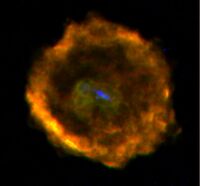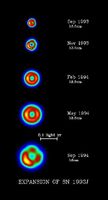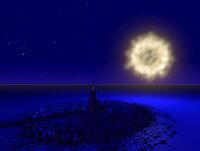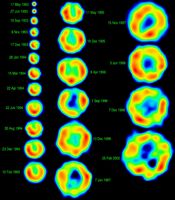Legacy Astronomical Images > Galactic Sources Series > Supernovae Unit
Description
A supernova is an extremely violent explosion of a star many times more massive than our Sun. During this explosion, the star may become as bright as all the other stars in a galaxy combined, and in which a great deal of matter is thrown off into space at high velocity and high energy. The remnant of these massive stars collapse into either a neutron star or a black hole.
Collection Items
Collection Tree
- Legacy Astronomical Images
- Legacy Astronomical Images > Galactic Sources Series
- Legacy Astronomical Images > Galactic Sources Series > Supernovae Unit
- Legacy Astronomical Images > Galactic Sources Series





